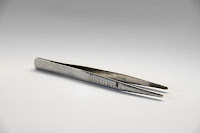Endangered Honey Bees
In these two weeks I have made progress with my 20 time project by gathering more information on my topic and trying to piece it together. I haven't had any setbacks so far in my project. My next steps in the process are hopefully to visit a honey bee farm. I found some relatively close and plan to contact them so I can go to the farm and ask them questions about their bees to gather much more information. With my plan to visit the bee farm I can use my knowledge about endangered honey bees and spread the awareness to my family and friends. My goal for this 20 time is for people all around to be aware of the importance of honey bees and how crucial their survival is to the world.










